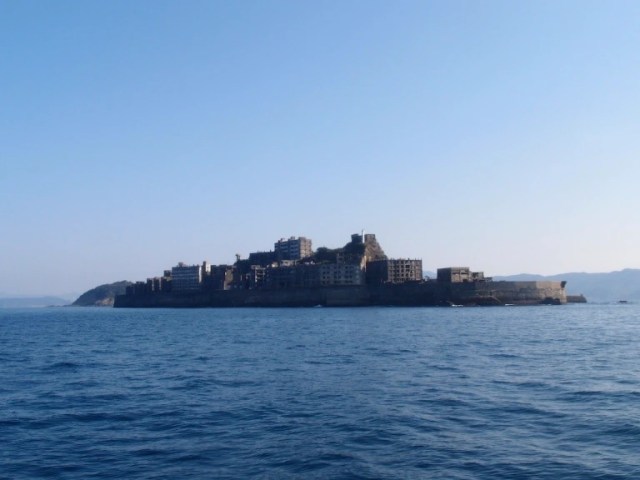
Putting together “Battleship Island” gave us a new perspective on what life was like for the families that lived there.
A while back, we spent the day recreating Japan’s most famous mountain, Mt. Fuji, in paper form. Today, we’re turning our attention, and fingertips, to another iconic sight of Japan as we build a papercraft Gunkanjima.
Officially called Hashima, the Nagasaki Prefecture island got its nickname because of its visual resemblance to a battleship (gunkan in Japanese). Previously the site of an undersea coal mining operation, Gunkanjima’s remote location meant an entire city had to be built atop the island for workers and their families to live in. When the mine suddenly shut down in 1974, though, residents got off the island as quickly as they could, turning it into a concrete ghost town with a disquieting beauty.
There are two versions of the kit, though their pieces are identical. The budget option is priced at 1,100 yen (US$10.50), while the laser-cut version that allows you to pop the pieces out without the use of any other cutting tools (which we opted for through retailer Village Vanguard’s online shop here) is 2,200 yen.
In addition to the kit’s instructions, the foundation sheet has markings for what buildings are meant to be placed where, so assembly isn’t too hard. You’ll want to be gentle with the pieces, though, as the kit’s paper is bit on the thin side.
While the kit isn’t an exact one-for-one replica of the abandoned cityscape, it’s still remarkably detailed. Looking at our reference photos of the island, we were able to spot the real-life versions of the structure we were putting together several times, like with Hashima Shrine (端島神社) here.
As we completed more buildings, the angular, battleship-like shape of the town began to form.
Like we mentioned above, Gunkanjima wasn’t just a coal mining operation, but a fully functioning community. A flat patch of land at the northern end of the island, for example, had a hospital and elementary school, and also a dormitory for teachers who instructed the miners’ children.
The west area was for residential and recreational use. In addition to apartment blocks, there was a movie theater, tennis court, swimming pool, and even a pachinko parlor.
The majority of the mining infrastructure was on the east side. While the architecture is dominated by rectangular structures, this building with a peaked roof marked the entrance to the mine’s Number-Four Shaft and housed elevators and winches that carried workers and their equipment down below sea level.
With some development on Gunkanjima going right up to the coastline, a sea wall was built to protect the city from potentially damaging ocean waves, and that too is a part of the papercraft kit.
As we put the kit together, we were reminded of a Japanese phrase, ichizan ikka. Translating literally to “one mountain, one family,” it’s meant to convey the feeling of solidarity among miners who work at the same site, as the long hours and other demands of their job mean that they, and their families, often become closer to each other than coworkers in regular nine-to-five office jobs would.
It’s said that at the peak of its boom days, Gunkanjima had a population density that was nine times that of Tokyo. Putting the kits’ pieces in place, and seeing just how close people lived to one another, we couldn’t help but be reminded of the importance of strong bonds within a community, even if you and your neighbors aren’t hauling coal together.
Photos ©SoraNews24
● Want to hear about SoraNews24’s latest articles as soon as they’re published? Follow us on Facebook and Twitter!
[ Read in Japanese ]